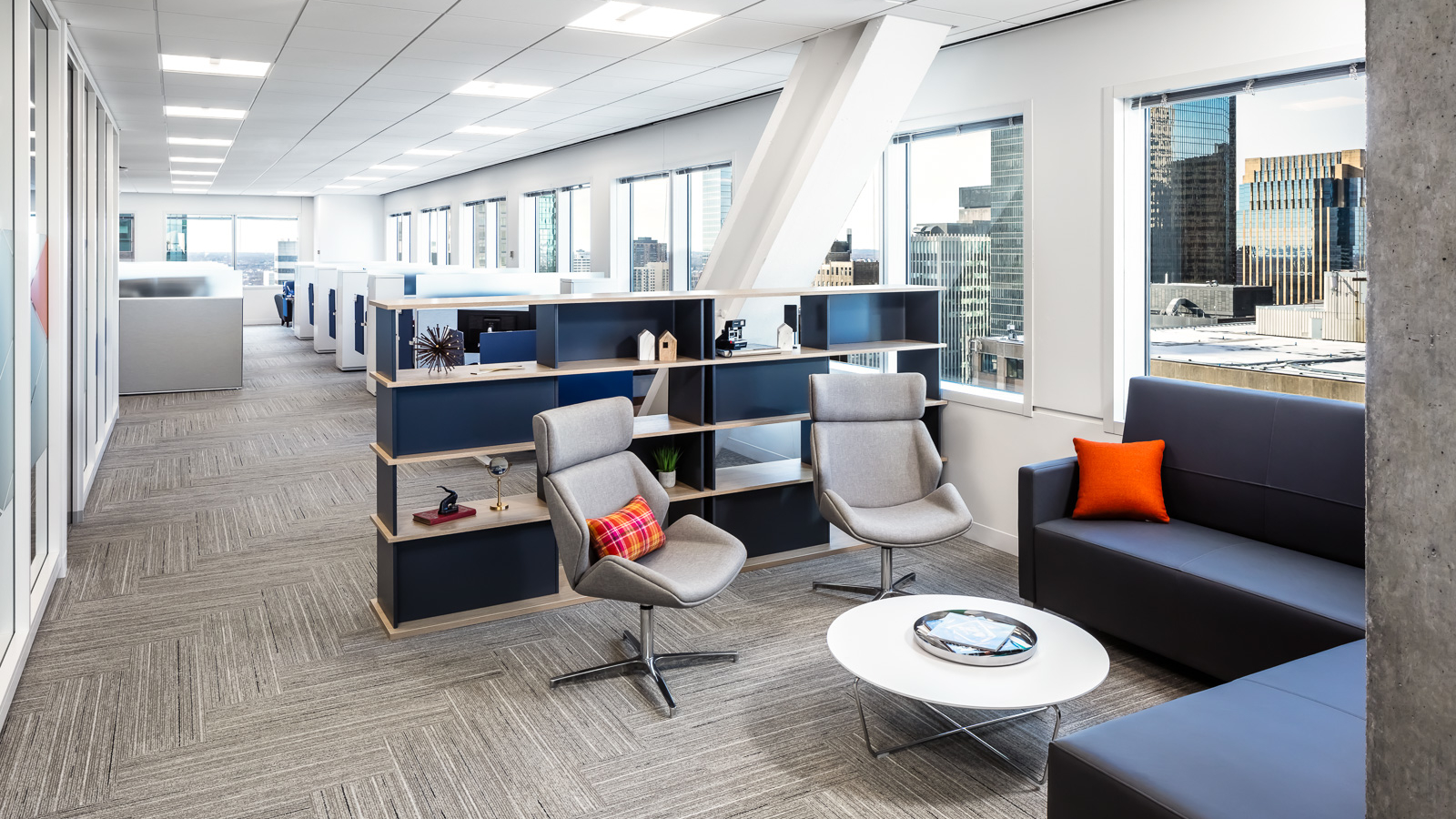Are your collaborative spaces lonely?
Collaboration and amenity spaces are some of the latest buzz words in office design. A successful collaborative area needs to be more than a few chairs installed in a corner of the open environment. With human capital being the largest expenditure, followed by real estate, your physical environment can be a powerful asset if done well. Once the value of amenity spaces are recognized, the next question is often, how to determine the right amount of space that should be allocated to that use.
Utilization
The average utilization of meeting spaces can be as low as 30%. A few factors influence utilization including size, configuration, location within the office, access to daylight and technology resources. The research also indicates that there are peak usage days and times within the week, such as Wednesdays between 2 and 4 pm. This often translates to people complaining they can never find an open meeting space, yet when the CEO walks by, he or she sees empty spaces.
Scale
Many studies indicate that the most desired rooms accommodate between 2 and 7 people, giving utilization rates up to 20% higher than larger rooms. Your ratio of dedicated individual desks to agile work models will affect the range of collaborative and focus areas you should plan for. Examples range from 10-12% of total space dedicated to group usage but can range as high as 30-45% of the environment. The most innovative companies provide up to 2x more group spaces than their conservative counterparts.
Relevance
So why should you spend money on amenity spaces? If your goals are to attract and retain the right talent for your organization and to foster innovation, you need amenity spaces. First off, it is expected by your current and future employees. Our world is abounding with choice and the best talent will exercise their right to be in the most progressive work environment. If you engage with some level of agile work style, it can help offset the need for providing everyone with an individual desk plus 2 other choices of places to work. Second, cultivating collaboration leads to the best innovation. This is where creativity becomes a reality. In Gallup’s annual engagement survey, only 32 percent of the U.S. workforce is engaged, with 50.8 percent not engaged and 17.2 percent actively disengaged.
The key to amenity space that is desirable is to; addresses your employees’ needs, gives them choice and variety. Give them space to focus on individual tasks and group work as well as areas where more vocal collaboration can occur. Designate some spaces as limited technology zones and appoint most spaces with intuitive technology for quick and easy sharing.
SOUNDBITES
- Average utilization of meeting spaces as low as 30%
- 2-7 person rooms have the highest usage
- Plan to dedicate 25-30% of SF to collaboration spaces
- Keys to success: variety, choice, customized to your employees’ needs
- Engagement leads to collaboration which drives innovation
DIVE DEEPER
Creativity, Innovation and Design Implications



